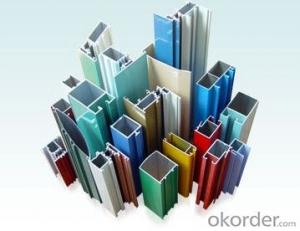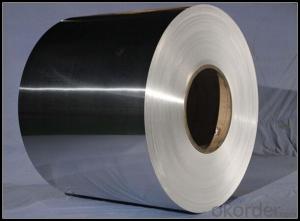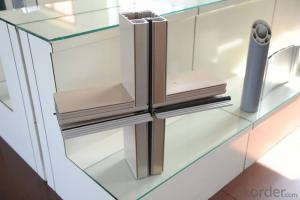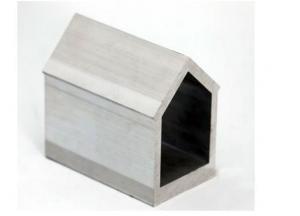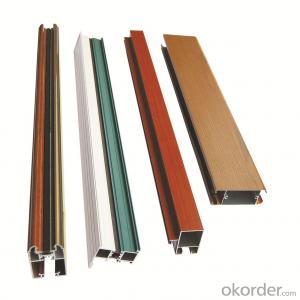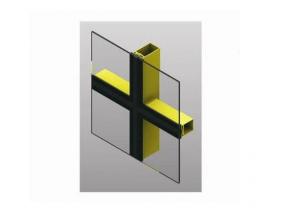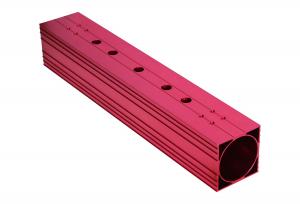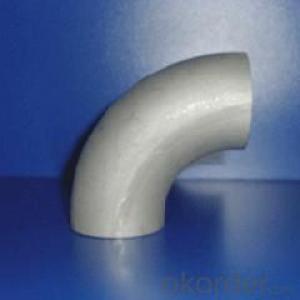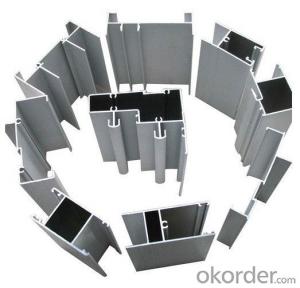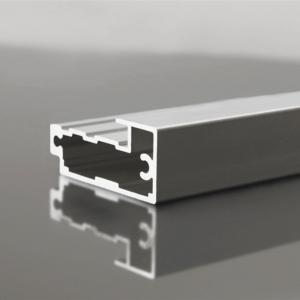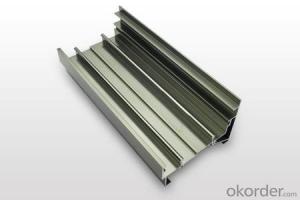Extrusion Profiles Aluminum Coil in Accordion to European Standard
- Loading Port:
- Shanghai
- Payment Terms:
- TT OR LC
- Min Order Qty:
- 5 m.t.
- Supply Capability:
- 2000 m.t./month
OKorder Service Pledge
OKorder Financial Service
You Might Also Like
Specification
Structure of Aluminium Coil in Acoording to Europ Standard Description:
We have more than 10 years experiences on manufacturing kinds of aluminum profiles, such as Aluminum Window & Door profiles, Aluminum tile trim profiles, Aluminum profiles for LED light, Round/Square General profiles, Aluminum heat sink, Aluminum heating insulation profiles, Curtain wall Aluminum profiles, and others Industry profiles.
Our products have exported to all over the world, and we also have a large of market share in Algeria, Angola, Philippine, Guinea, Ghana, South Africa, Nepal, Nigeria, Tanzania, Iraq etc.
Main Features of the Aluminium Coil in Acoording to Europ Standard Applications:
1, Strong R&G: help customers finalize the design, strong tool design ability, excellent, pressing and surface treatment technology;
2, Strong quality management: ISO&SGS SYSTEM;
3, 24 hours on-line communication, professional, patient, flexible;
4, High capacity of manufacturing and wide range of products;
5, We can provide secondary manufacturing.
6, High corrosion resistance, high weather resistance and good wear resistance.
7, Alternative surface treatment: Colorful ANODIZE, POWDER COATING, ELECTROPHORESIS & WOODEN GRAIN. Plentiful colors upon your needs.
8, Excellent material for smooth and subtle edges, elegant appearance.
9, Strong coated adhesion which is suitable for construction and industrial material.
Images of the AAluminium Coil in Acoording to Europ Standard:
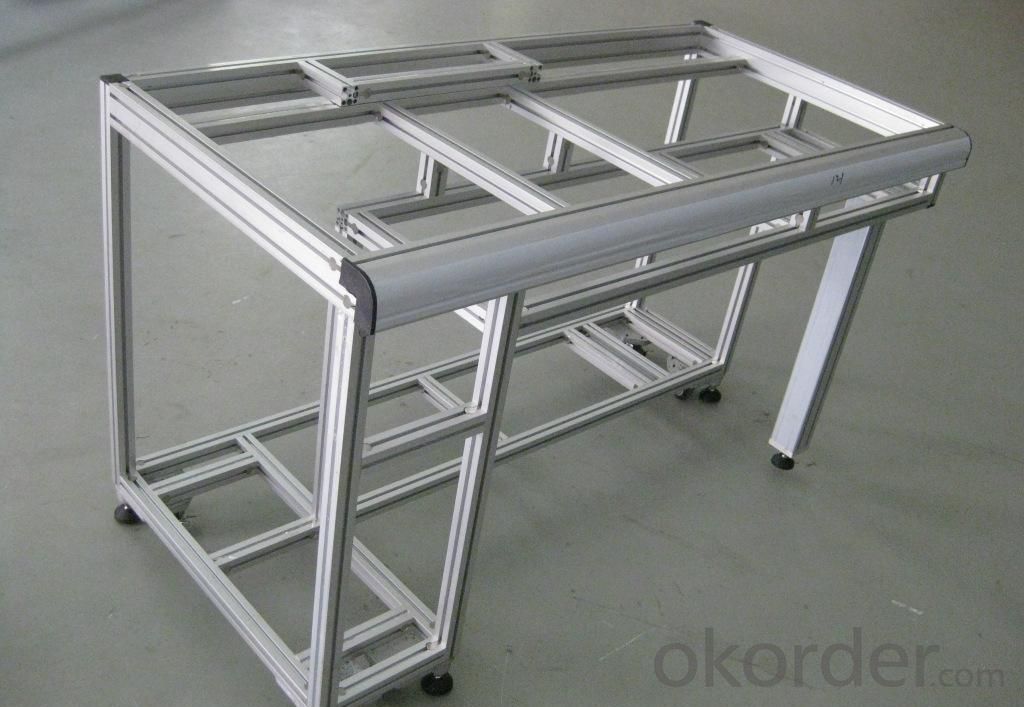
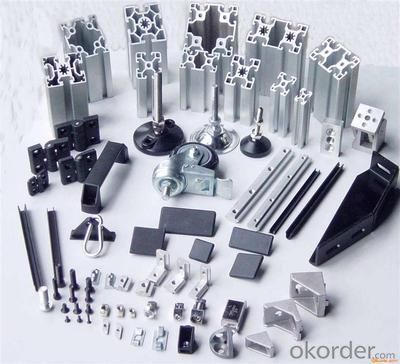
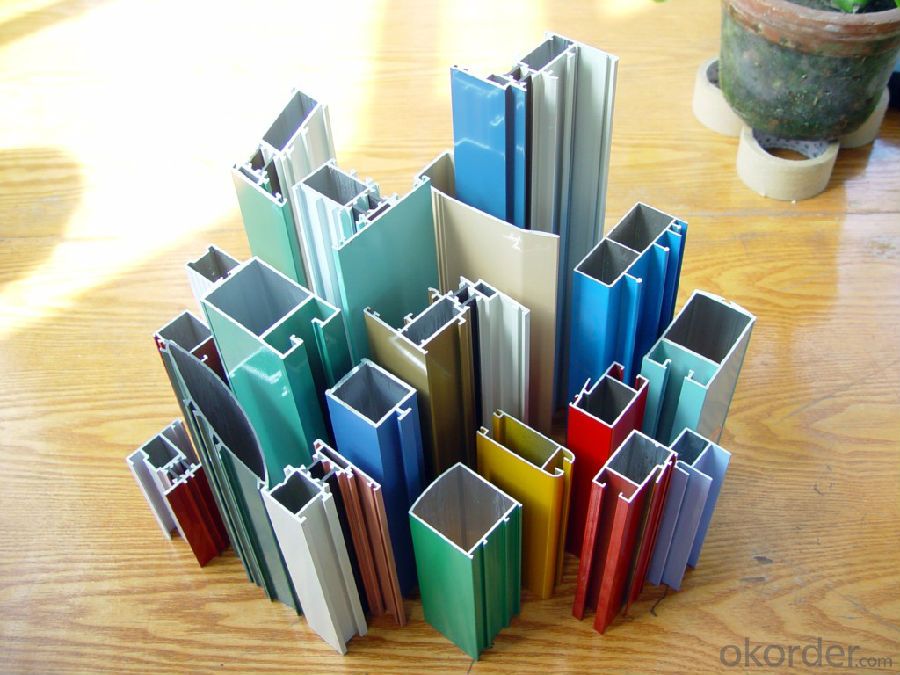
AAluminium Coil in Acoording to Europ Standard Specification:
Material | Alloy Aluminum 6063,6061,6005 or customer nominated |
Temper | T3, T4, T5, T6 |
Surface | Anodize, electrophoresis, powder coating, PVDF coating, wood grain painting, matted, etc. |
Colour | Any colour based on Standard Germany RAL Mark |
Length | Coating 6.5 meters, Anodizing 6.5 meters, Mill finish 5 meters |
Press Machine | 500-4000 tons all together 64 press lines. |
Fabrication | 1. Windows and doors; 2. Drilling; 3. Bending; 4. Cutting; 5. etc. |
Certificate | ISO 9001 |
Moulding | 1. Using our moulds, no fee; |
2. Using customer drawing, opening mould, usually about 10~50 tons then the moulding can be refunded. | |
3. Mould cost is negotiable base on the order quantity | |
Capability | Annual output 100,000 tons |
FAQ:
1.Q: What about leadtime ?
A: Normally the leadtime is 60days after we receive the deposit and confirm the details. All the press machines we use is the best quality in China Yangli brand. The press machine leadtime from Yangli is 50days, the best leadtime we can give is 60days.
2.Q: What's the lead time for moulds?
A: Normally the mould leadtime is 45 days after we confirm all the details with customer. Our professional mechanical enginners from Austria will design the mould according to the samples from customer, or by the specifications offered by customers.
3.Q:What kinds of mould you can make? and what is your strong point for the moulds?
A: we can make wrinkle wall mould and smooth wall mould both. For wrinkle wall mould we can make, 79" pan, fish pan, bbq pan. For smooth wall mould we can make muffin cup, and cake cup, tar cup,etc. We can also make 2 or 3 portion conatiner moulds as long as you offer us sample or specifications. Our strong points are all our moulds are WEDMLS cut, which makes the mould more accurate and precise. Important materials likestainless steel parts we make in Austria. We also recut after heat treatment, which most of makers do not take this process.
- Q: Are aluminum profiles suitable for sports equipment?
- Yes, aluminum profiles are suitable for sports equipment. Aluminum is lightweight, durable, and corrosion-resistant, making it an ideal material for various sports applications such as bicycles, tennis rackets, golf clubs, and ski poles. Additionally, aluminum profiles can be easily formed and customized to meet specific design requirements, making them a popular choice in the sports industry.
- Q: This question asks for methods to guarantee the high quality of aluminum profiles used in a construction project.
- <p>To ensure high-quality aluminum profiles for your building project, start by selecting profiles from reputable manufacturers known for quality. Check for certifications such as ISO 9001 for quality management systems. Inspect the profiles for uniformity in thickness and color, and ensure they are free from defects like dents or scratches. Request third-party test reports to verify the strength and durability of the profiles. Additionally, consider the chemical composition and alloy type to ensure they meet the required specifications for your project. Always procure from suppliers who offer warranties and after-sales support.</p>
- Q: Differences between industrial aluminum and iron products
- The so-called aluminum steel, generally divided into sections and plates, pipes and metal products in these four categories, general structural steel is usually refers to the production of metal structure steel for buildings, bridges, ships, boiler or other engineering. Such as carbon structural steel, low alloy steel, steel and so on.
- Q: What are the different shapes and profiles available for aluminum profiles?
- Aluminum profiles come in various shapes and profiles, each with its own distinct characteristics and uses. Let's explore some of the most common options: 1. Square and rectangular profiles: These profiles have straight sides and sharp corners, making them perfect for applications that require strength and rigidity. They are frequently utilized in architectural structures, frames, and support systems. 2. T-shape profiles: T-shaped profiles consist of a perpendicular flange or arm extending from a larger base. They are often employed for structural purposes, providing additional strength and support in beams and columns. 3. Round profiles: Round profiles have a circular cross-section and are frequently preferred in applications that demand a smooth and seamless appearance. They are commonly found in decorative uses like handrails, lighting fixtures, and furniture. 4. Angle profiles: Angle profiles have two sides perpendicular to each other, creating a 90-degree angle. These profiles are commonly used in corner protection, edging, and framing applications. They are frequently seen in industries such as construction, manufacturing, and automotive. 5. I-beam profiles: I-beam profiles feature a central vertical web with flanges on either side, forming an "I" shape. These profiles are renowned for their high strength-to-weight ratio and are commonly used in structural applications like bridges, buildings, and heavy-duty machinery. 6. Custom profiles: In addition to the standard shapes mentioned above, aluminum profiles can also be custom-designed and extruded to meet specific requirements. This allows for endless possibilities in terms of shape, size, and functionality. In conclusion, the wide range of aluminum profile shapes and profiles enables versatility and adaptability in various industries and applications. Whether you prioritize strength, aesthetics, or a combination of both, there is an aluminum profile shape and profile that will suit your specific needs.
- Q: What are the surface finishes available for aluminum profiles?
- Aluminum profiles offer a range of surface finishes, each with distinct aesthetics and properties. The options for surface finishes include: 1. Mill Finish: This is the standard finish straight from the mill, without any additional treatment. It has a raw look with visible manufacturing marks and is typically used for structural purposes where appearance is not important. 2. Anodized Finish: This finish involves an electrochemical process that forms a protective oxide layer on the aluminum surface, enhancing corrosion resistance and durability. Anodized finishes come in different colors and can have a glossy or matte appearance, making them popular for decorative applications. 3. Powder Coating: This finish involves applying dry powder to the aluminum surface and then curing it in an oven. It offers excellent durability, corrosion resistance, and a wide range of color options. It can also provide different textures, including smooth, matte, or textured, allowing for customization based on specific design needs. 4. Brushed Finish: Achieved by brushing the aluminum surface with abrasive materials, this finish creates fine lines for a brushed appearance. It is often used to add a decorative touch to aluminum profiles and can provide a sleek and modern look. 5. Polished Finish: Polishing entails using abrasive materials to create a smooth and shiny surface on the aluminum. This finish can range from high gloss, mirror-like appearance to a satin finish. It is commonly used in architectural applications where a reflective and visually appealing surface is desired. 6. Wood Grain Finish: This finish involves applying a special coating to the aluminum surface, imitating the look of wood grain. It provides a natural and warm appearance, making it suitable for applications where a wood-like aesthetic is desired without the maintenance requirements of real wood. These examples showcase the variety of surface finishes available for aluminum profiles. The selection of a finish depends on the intended use, desired appearance, and specific requirements such as corrosion resistance, durability, and ease of maintenance.
- Q: What are the different surface protection methods for aluminum profiles?
- There are several surface protection methods for aluminum profiles, including anodizing, powder coating, painting, and mechanical finishes. Anodizing is a popular method that creates a protective oxide layer on the surface, providing corrosion resistance and enhancing the appearance. Powder coating involves applying a dry powder onto the profile, which is then cured to create a durable and decorative finish. Painting is another option, where a liquid paint is applied and cured to protect the surface. Mechanical finishes involve processes like brushing or polishing to achieve a desired texture or appearance while still protecting the aluminum profile.
- Q: This question asks for guidance on selecting the appropriate size and shape of aluminum profiles for a specific application.
- <p>Choosing the right size and shape of an aluminum profile involves several steps. First, consider the load-bearing requirements and structural integrity needed for your application. Consult with engineering standards or use software that can simulate the stress and load on the profile. Second, consider the aesthetic and functional requirements, such as the profile's visibility and the need for specific features like slots or holes. Third, review the available profiles from suppliers, matching your needs with their offerings. Finally, prototype with the selected profile to ensure it meets all requirements before full-scale production. Always consult with aluminum profile manufacturers or suppliers for their expertise and recommendations.</p>
- Q: Explain if aluminum profiles can be utilized in constructing energy-efficient building systems and if so, how they contribute to energy efficiency.
- <p>Yes, aluminum profiles can be used to create energy-efficient building systems. They are lightweight yet strong, which reduces the energy required for construction. Aluminum profiles also have excellent thermal conductivity, allowing them to be used in double-glazed windows and doors, improving insulation and reducing heat loss. Additionally, aluminum can be easily recycled, reducing the energy needed for new materials. Their high reflectivity can also help in reducing heat absorption, further contributing to energy efficiency.</p>
- Q: What are the benefits of using aluminum profiles in interior design?
- There are several benefits of using aluminum profiles in interior design. Firstly, aluminum profiles are highly versatile and can be used in a wide range of applications. They can be easily customized and fabricated to fit different design requirements. Whether you are designing a modern, minimalist space or a traditional, ornate interior, aluminum profiles offer a flexible solution. Secondly, aluminum profiles are lightweight yet durable, making them an ideal choice for interior design. They are resistant to corrosion, moisture, and temperature changes, ensuring a long lifespan. This durability also means that aluminum profiles require minimal maintenance, saving both time and money in the long run. Another benefit of using aluminum profiles is their aesthetic appeal. They come in a variety of finishes, colors, and textures, allowing designers to achieve their desired look and feel. Aluminum profiles can be anodized, powder-coated, or polished, giving them a sleek and modern appearance. They can also be designed to mimic other materials, such as wood or stainless steel, while offering the added benefits of aluminum. Additionally, aluminum profiles offer excellent thermal and acoustic insulation properties. They can help regulate temperature and reduce noise levels, creating a more comfortable and peaceful environment. This is especially beneficial in areas where soundproofing or energy efficiency is required, such as offices, hotels, or residential spaces. Lastly, aluminum profiles are eco-friendly and sustainable. Aluminum is a highly recyclable material, and using aluminum profiles in interior design helps reduce waste and minimize environmental impact. Moreover, aluminum profiles can contribute to energy efficiency by allowing natural light to enter a space, reducing the need for artificial lighting during the day. In conclusion, the benefits of using aluminum profiles in interior design are versatility, durability, aesthetic appeal, thermal and acoustic insulation, and sustainability. These qualities make aluminum profiles a popular choice among designers and architects looking to create functional and visually appealing spaces.
- Q: Our company purchased aluminum 4-6 meters, many models, what is a good way to make the store that is beautiful and neat, but also conducive to the show?
- 1, if the amount of each model is relatively small, only a few words, as upstairs said, to make some of the following relatively heavy Wang frame (preferably tapered, so that it will not fall);2, if the amount is large enough to do some U type material frames, each frame to make a card, may the material box pile up;
Send your message to us
Extrusion Profiles Aluminum Coil in Accordion to European Standard
- Loading Port:
- Shanghai
- Payment Terms:
- TT OR LC
- Min Order Qty:
- 5 m.t.
- Supply Capability:
- 2000 m.t./month
OKorder Service Pledge
OKorder Financial Service
Similar products
Hot products
Hot Searches
Related keywords












